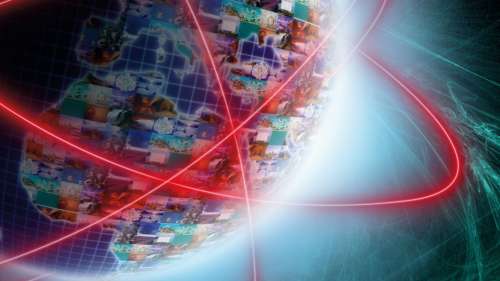
Breaking News
 Is Yen Carry Trade's unwind about to trigger a repo market meltdown? Let's dive into the mec
Is Yen Carry Trade's unwind about to trigger a repo market meltdown? Let's dive into the mec
 Chairman Rand Paul Releases New Report Revealing Hundreds of Billions...
Chairman Rand Paul Releases New Report Revealing Hundreds of Billions...
 Get Schiffty Music Video | Rick and Morty | Adult Swim
Get Schiffty Music Video | Rick and Morty | Adult Swim
Top Tech News
 This tiny dev board is packed with features for ambitious makers
This tiny dev board is packed with features for ambitious makers
 Scientists Discover Gel to Regrow Tooth Enamel
Scientists Discover Gel to Regrow Tooth Enamel
 Vitamin C and Dandelion Root Killing Cancer Cells -- as Former CDC Director Calls for COVID-19...
Vitamin C and Dandelion Root Killing Cancer Cells -- as Former CDC Director Calls for COVID-19...
 Galactic Brain: US firm plans space-based data centers, power grid to challenge China
Galactic Brain: US firm plans space-based data centers, power grid to challenge China
 A microbial cleanup for glyphosate just earned a patent. Here's why that matters
A microbial cleanup for glyphosate just earned a patent. Here's why that matters
 Japan Breaks Internet Speed Record with 5 Million Times Faster Data Transfer
Japan Breaks Internet Speed Record with 5 Million Times Faster Data Transfer
 Advanced Propulsion Resources Part 1 of 2
Advanced Propulsion Resources Part 1 of 2
 PulsarFusion a forward-thinking UK aerospace company, is pushing the boundaries of space travel...
PulsarFusion a forward-thinking UK aerospace company, is pushing the boundaries of space travel...
 Dinky little laser box throws big-screen entertainment from inches away
Dinky little laser box throws big-screen entertainment from inches away
 'World's first' sodium-ion flashlight shines bright even at -40 ºF
'World's first' sodium-ion flashlight shines bright even at -40 ºF
If EMdrive is real and scales with Q factor then we get almost Star Trek level Technology

If the NASA emdrive performance of 1.2 millinewtons per kilowatt.
8.3 TeraWatts of power would be needed to provide 10 million newtons of thrust to accelerate a 1000 ton space-craft at 1 gee of acceleration. We have no power source that could generate 8.3 TeraWatts for a 1000 ton spacecraft.
If EMDrive performance increases with the Q-factor as some have theorized, then we could tune the cavity and make it superconducting. If we take the NASA EM-Drives and pump the Q factor to ~30 million, then about 2 GW power is needed for the sustained 1 gee thrust.
Theoretical nuclear fission reactors could power such a spacecraft. Gas-core or magnetic collimator fission-fragment reactor might be work but have been theoretically designed and have very limited experimental development.A fast-spectrum reactor with a thermal output of ~ 6 GW and ~35 % thermal conversion efficiency would be a first pass design to supply the power.



